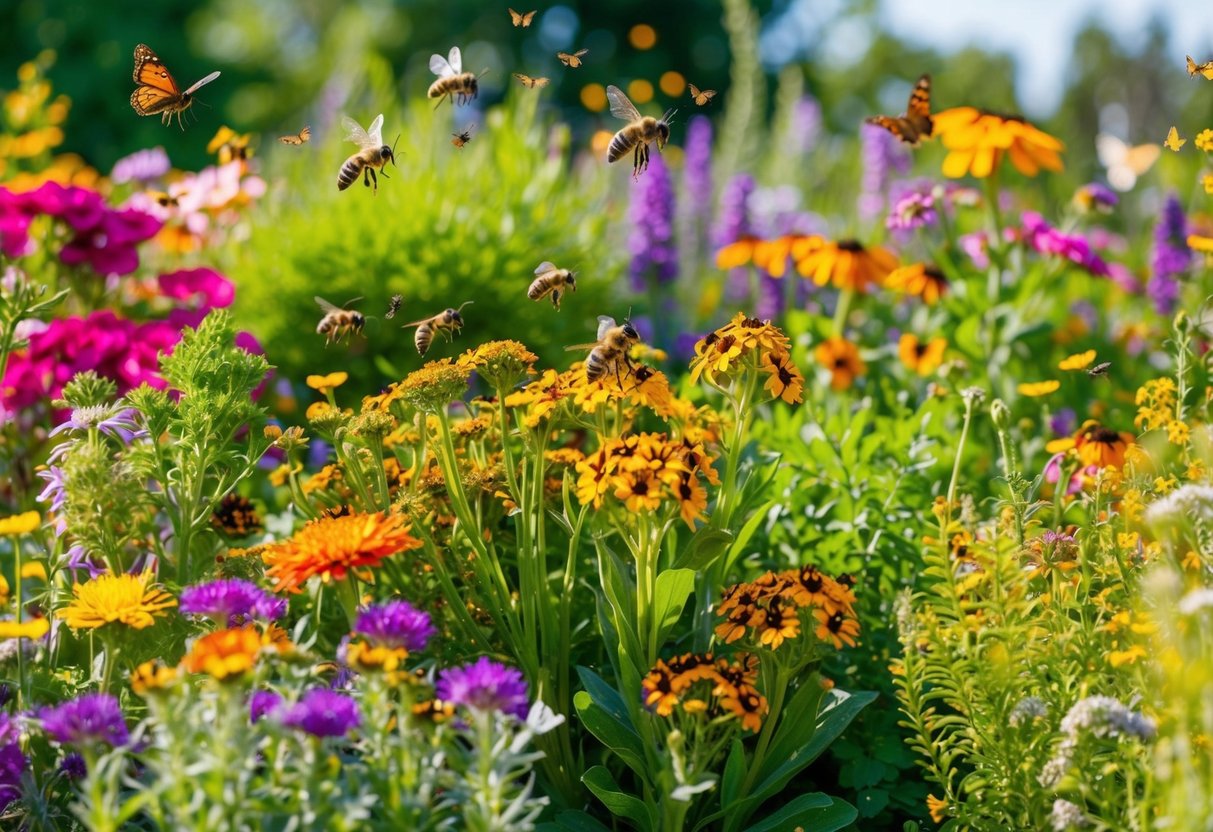
Sustainable gardening focuses on creating an environment that supports native ecosystems while minimizing human impact on the land. A crucial component of this practice is establishing pollinator-friendly gardens. These gardens play an essential role in supporting the populations of bees, butterflies, and other pollinating insects. Creating a garden that attracts and nurtures these pollinators involves selecting a variety of native plants that provide nectar and pollen throughout the seasons.
In addition to plant selection, gardeners can incorporate practices that sustain pollinator habitats, such as avoiding pesticides, providing water sources, and creating nesting sites. By integrating these elements, they create a thriving, self-sustaining ecosystem that benefits both the garden and the surrounding environment. Sustainable gardens not only enhance biodiversity but also contribute to the health of crops, flowers, and fruit-bearing plants.
Emphasizing native plant species ensures more robust pollinator interactions, as these plants and pollinators have evolved together. Gardeners are encouraged to learn about their regional plants and insects to develop gardens that are specifically tailored to local environmental conditions. This approach supports the broader sustainability effort while providing an enjoyable and enriching outdoor space.
Importance of Pollinators in the Ecosystem
Pollinators play a crucial role in maintaining biodiversity by facilitating the reproduction of many plant species. This natural process supports the growth of fruits, seeds, and new plants, which are vital sources of food and shelter for countless organisms. Without pollinators, numerous ecosystems would face a decline in plant diversity and resilience.
Pollination is essential for the reproductive success of many flowering plants. It is the transfer of pollen from the male part of a flower to the female part, enabling fertilization. This process helps maintain genetic diversity within plant populations and ensures the survival of numerous plant species.
The ecosystem relies heavily on pollinators for its balance and health. By promoting plant reproduction, pollinators indirectly contribute to soil structure and nutrient cycling. Additionally, they help in regulating plant populations, which can prevent any one species from dominating and causing harm to the environment.
Pollinators, such as bees, butterflies, moths, birds, and bats, have evolved alongside plants, developing unique relationships with specific species. These relationships are vital, as they ensure the continuation of both plant and pollinator populations. Conservation efforts focused on pollinators have a positive impact on ecosystem stability and productivity.
Identifying Key Pollinators for Gardens
Creating a garden that thrives involves knowing which pollinators are crucial for the ecosystem. These creatures play a significant role in plant reproduction and ensuring biodiversity.
Bees and Native Bees
Bees are possibly the most well-known pollinators, essential to plant reproduction. Their ability to move pollen between flowers enhances fruit and seed production. Technically, honeybees get a lot of attention. Yet, native bees such as bumblebees and mason bees are equally important.
These native species often adapt better to local environments, making them efficient pollinators. Gardeners can support these bees by planting flowers that provide nectar and pollen throughout the growing season. Native plants that bloom at different times are particularly beneficial. Moreover, avoiding pesticides aids their health and supports their populations.
Butterflies and Colorful Butterflies
Butterflies add beauty and diversity to gardens and also play a role in pollination. As they search for nectar, they inadvertently carry pollen on their legs and wings. Swallowtails, monarchs, and painted ladies are a few examples of such vital pollinators that genetic diversity relies on.
When cultivating a butterfly-friendly garden, variety is essential. Planting a range of flowers with different colors and patterns can attract these colorful creatures. Milkweed, asters, and coneflowers are popular choices. They provide larval host sites and a nectar source, ensuring that butterflies have a reason to stay.
Hummingbirds
Hummingbirds, with their rapid wings and iridescent feathers, are more than just ornamental. They provide essential pollination services, particularly for deep-throated flowers inaccessible to other pollinators. These tiny birds are particularly drawn to red and tubular flowers that contain high-energy nectar.
Gardens rich in nectar sources can attract and support hummingbird populations. Consider incorporating flowers like trumpet vine, salvia, and bee balm, which not only appeal to their tastes but also match their feeding habits. Creating a habitat with perching spots and water sources also invites these birds.